
Jan 15
/
Pedro Schicchi
Crop Forecast: Soy Brazil - 2024 01 15
Back to main blog page
"Update on hEDGEpoint's numbers for Brazilian soybeans crop"
Brazil Soybeans - Crop Estimates Update
Right to the point
Another month, another Conab and WASDE combo. Last week, soybean numbers from both agencies aligned with the average expectation, although still slightly above private houses’ numbers.
Following these important reports, our aim in this week’s update is to, well… update our crop number and show a bit of what is behind it. Let me give you the good stuff first: hEDGEpoint’s January crop number is 153.4M ton, down from 160.1M ton in early December.
Behind this decline is a hot and dry December, as is the market’s general view. Still, there are nuances that need to be discussed.
Brazil Soybean - Area, Yield and Production (M ha, ton/ha, M ton)
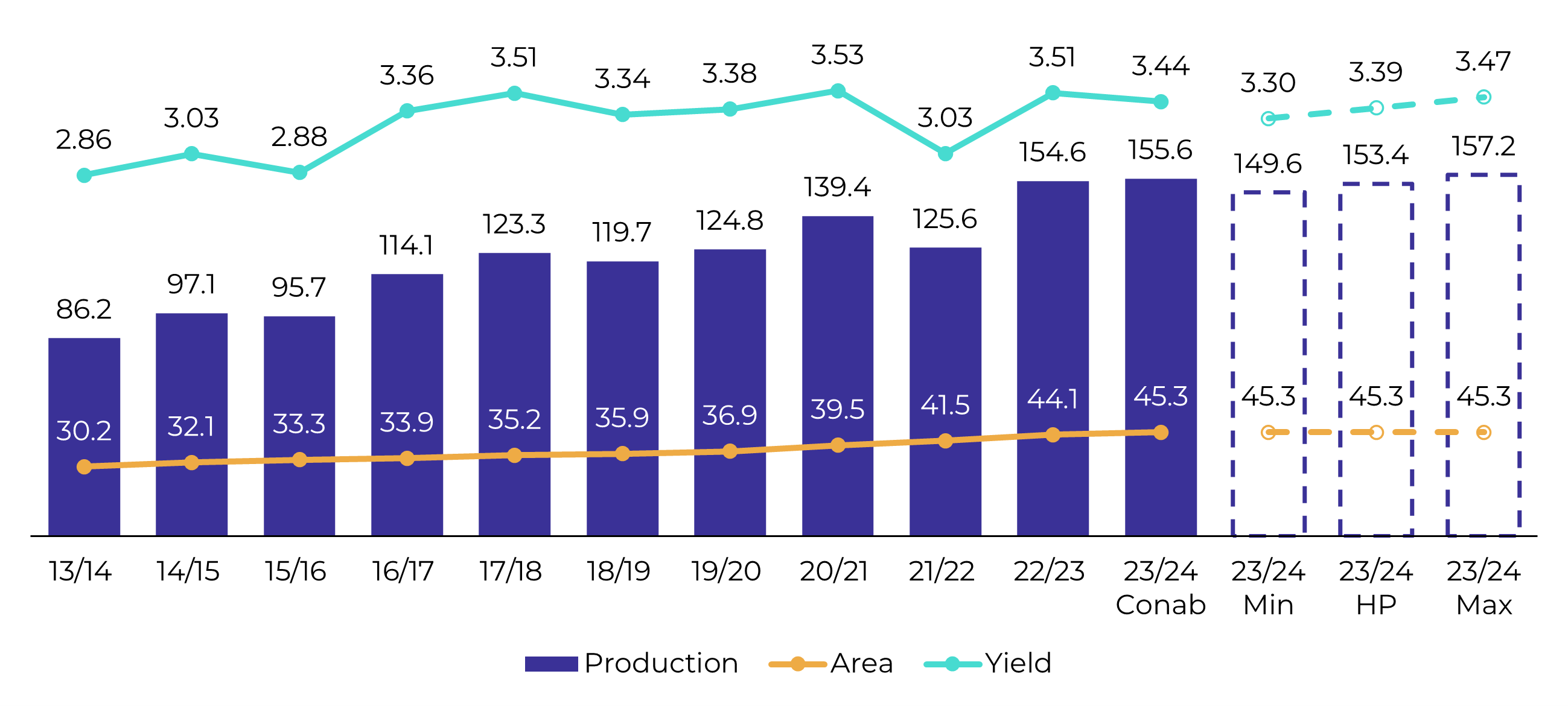
Source: Conab, hEDGEpoint
Phenology
Soybean Brazil - Phenology in Jan-7
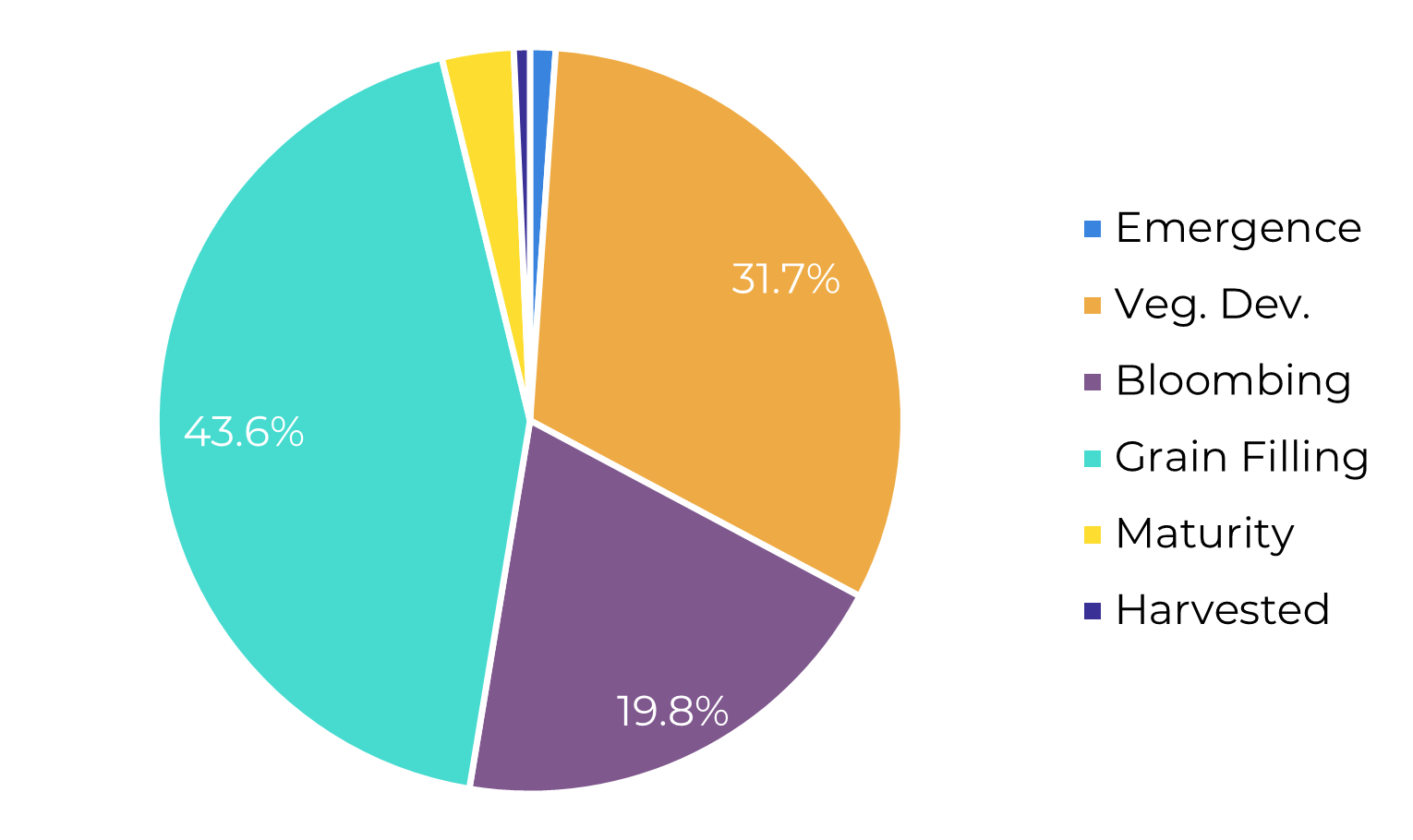
Source: Conab, hEDGEpoint
Regarding development, we are right at the “eye of the storm”. The majority of the fields are currently undergoing soybeans' reproductive stages, the most critical for yields.
As of last week (7), Conab reported 63.4% of the total planted area in either blooming or grain-filling stages. Soybeans can be quite resistant to poor climatic conditions early on the cycle, but it is at these stages of development that they are most vulnerable.
As it is known, sufficient hydric availability is especially crucial at this stage, but lower temperatures also help.
Weather
Temperature Anomaly (°C from normal average)
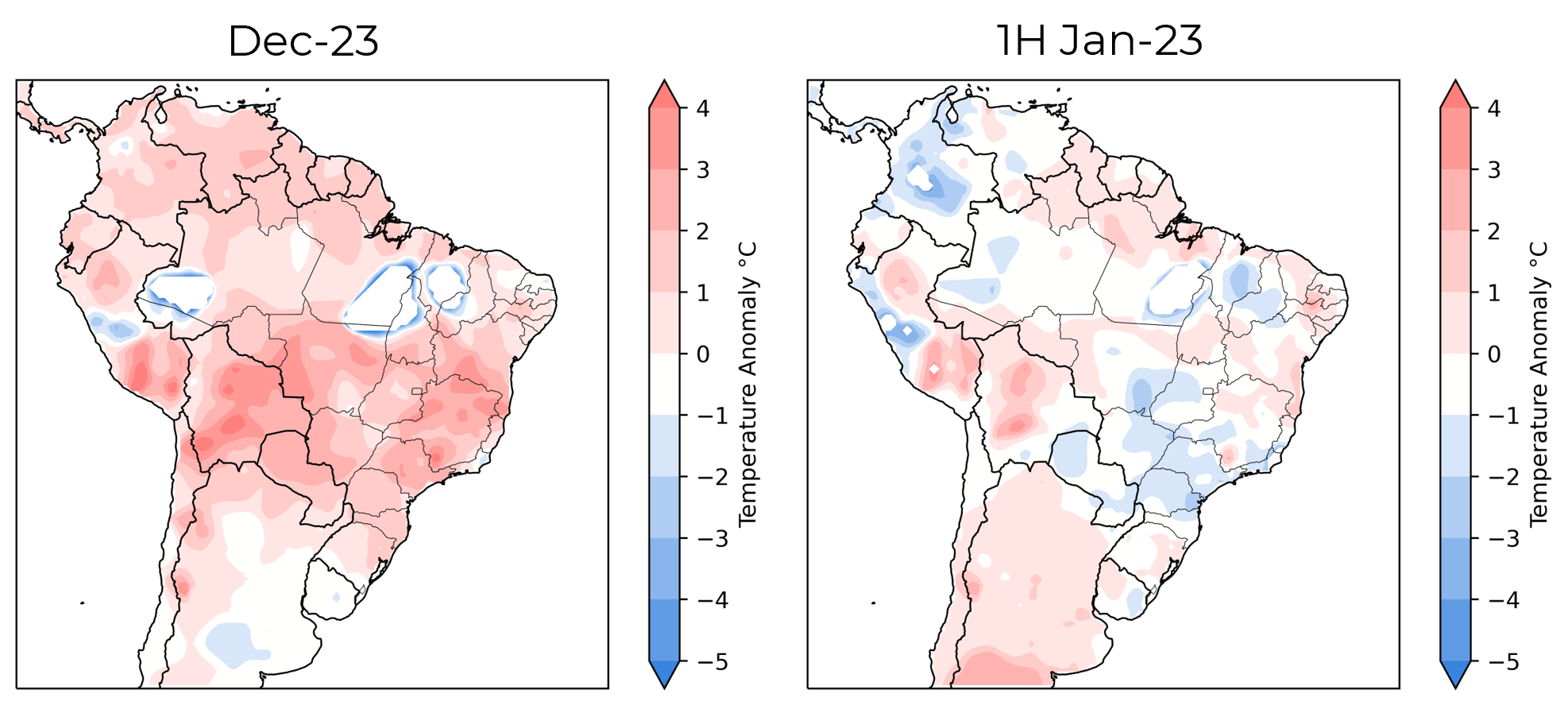
Precipitation (mm/day on average)
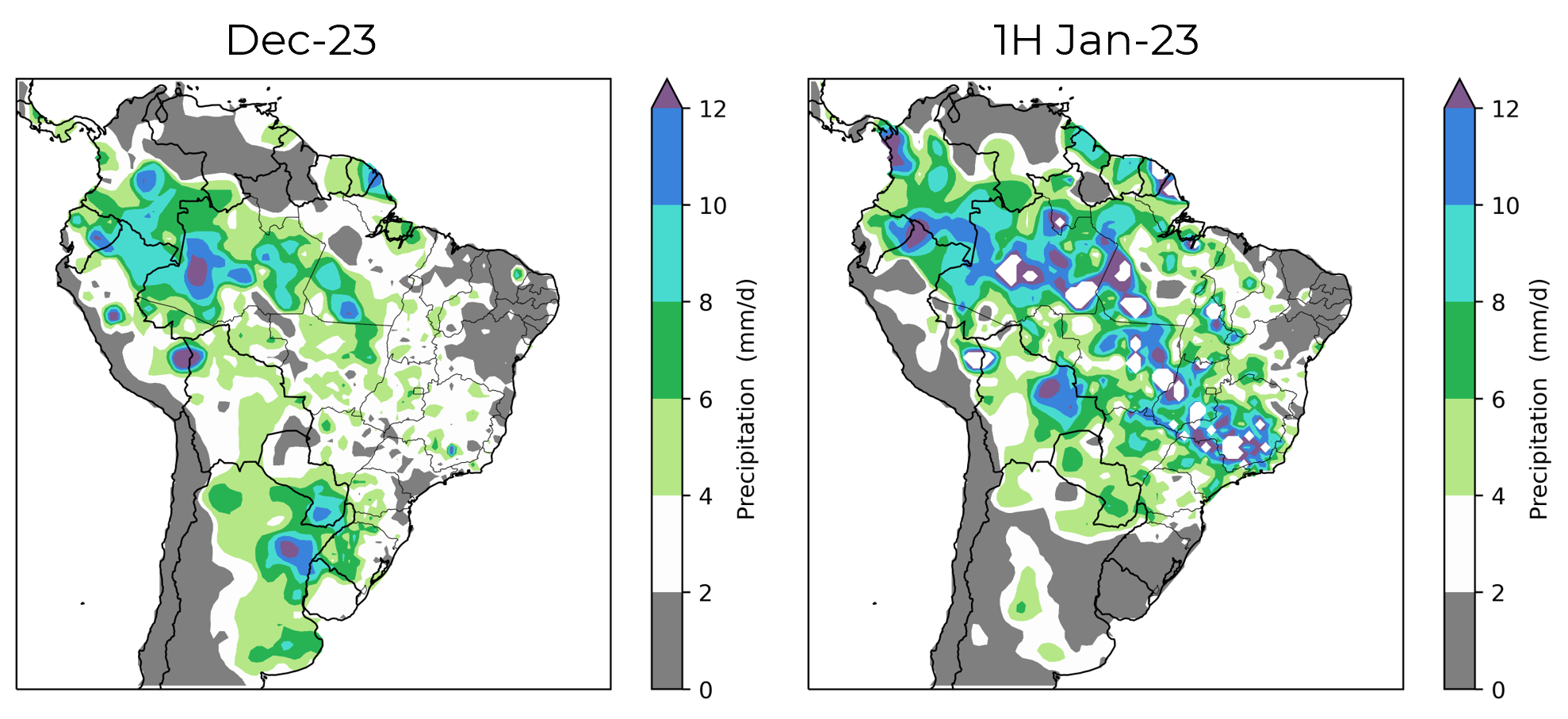
Source: NOAA, hEDGEpoint
Overall, climatic conditions in December were not the best. Temperatures were pretty high during the month and precipitation, on average, was below needed. More heat means more evaporation, which accentuates the issue of lack of water, which certainly affected crops this year.
For a lot of areas, this improvement may not bring higher yields, as the damage done was already irreversible by the time the weather started to turn better. However, for a lot of other areas, there is still time, and these improvements might stop national production from continuing to fall.
Still, the latter half of the month saw improvements, a trend that seems to be continuing in January. Temperature in these first couple of weeks have been a lot milder and, thus, beneficial for crops.
On top of lower temperatures, precipitation also improved. On average, a soybean plant needs ~8 mm/day of rainfall to thrive in the reproductive stages of its development.
For a lot of areas, this improvement may not bring higher yields, as the damage done was already irreversible by the time the weather started to turn better. However, for a lot of other areas, there is still time, and these improvements might stop national production from continuing to fall.
NDVI
Finally, the last input considered in our models is the Normalized Difference Vegetation Index (NDVI). NDVI is used to quantify vegetation greenness and is useful in understanding vegetation density and assessing changes in plant health (USGS). Though not perfect, the measure has a good correlation with yields.
Taking it into consideration there are two factors to notice. The first is that important regions (Mato Grosso, Goiás, Minas Gerais, and MATOPIBA for example) are all below last year's levels and, as such, are very likely to have poorer results, justifying the recent trend in the crop numbers.
The second, however, is that NDVI is mostly around the 20-year average in most states of Brazil, which softens a bit the tone of the failure. In the name of comparison, we can see how much below average were Rio Grande do Sul's crops in 21/22 and 22/23, both severe crop failures for the state.
NDVI - Mato Grosso, Goiás, Minas Gerais
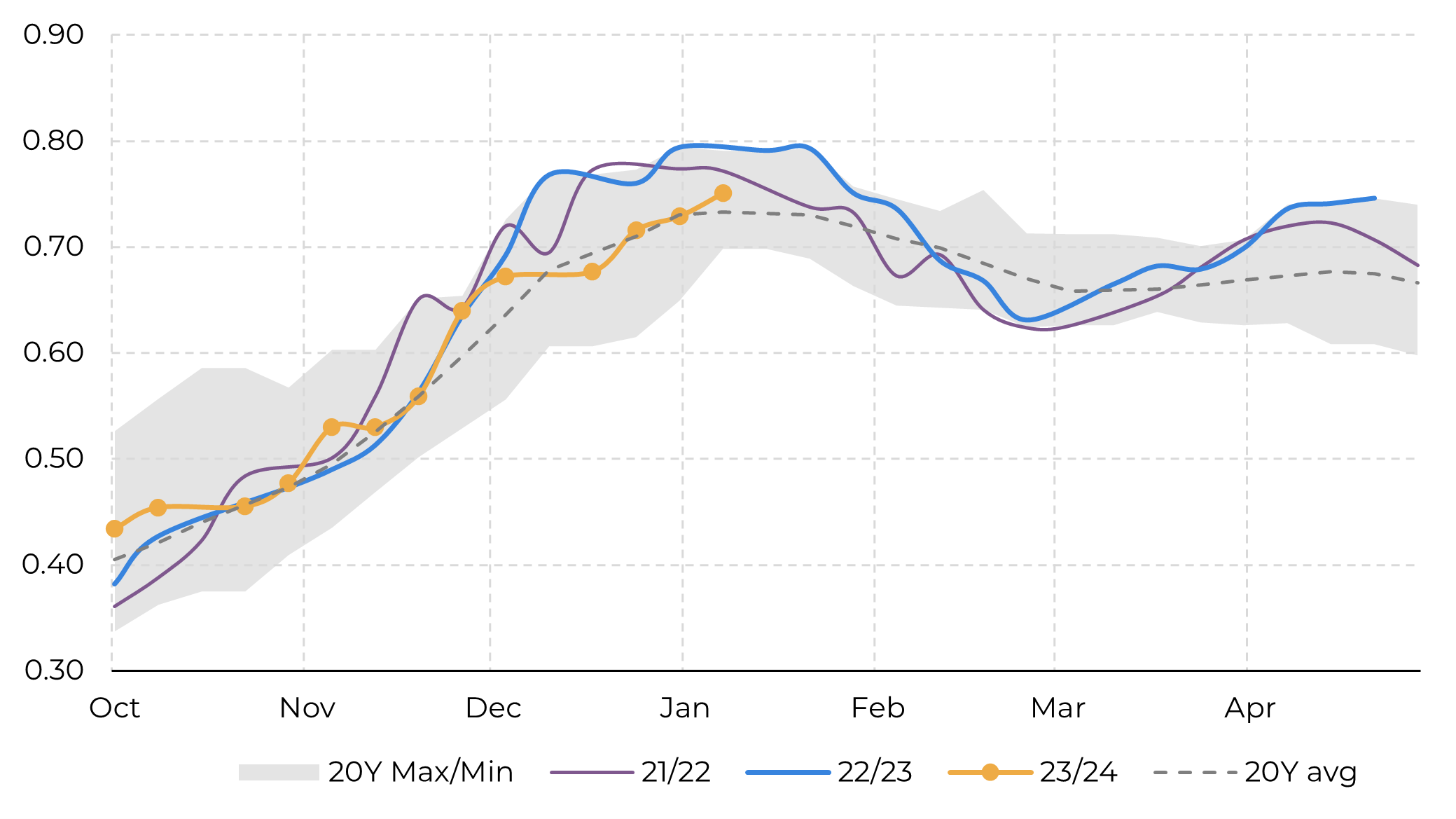
NDVI - Mato Grosso do Sul, São Paulo and Paraná
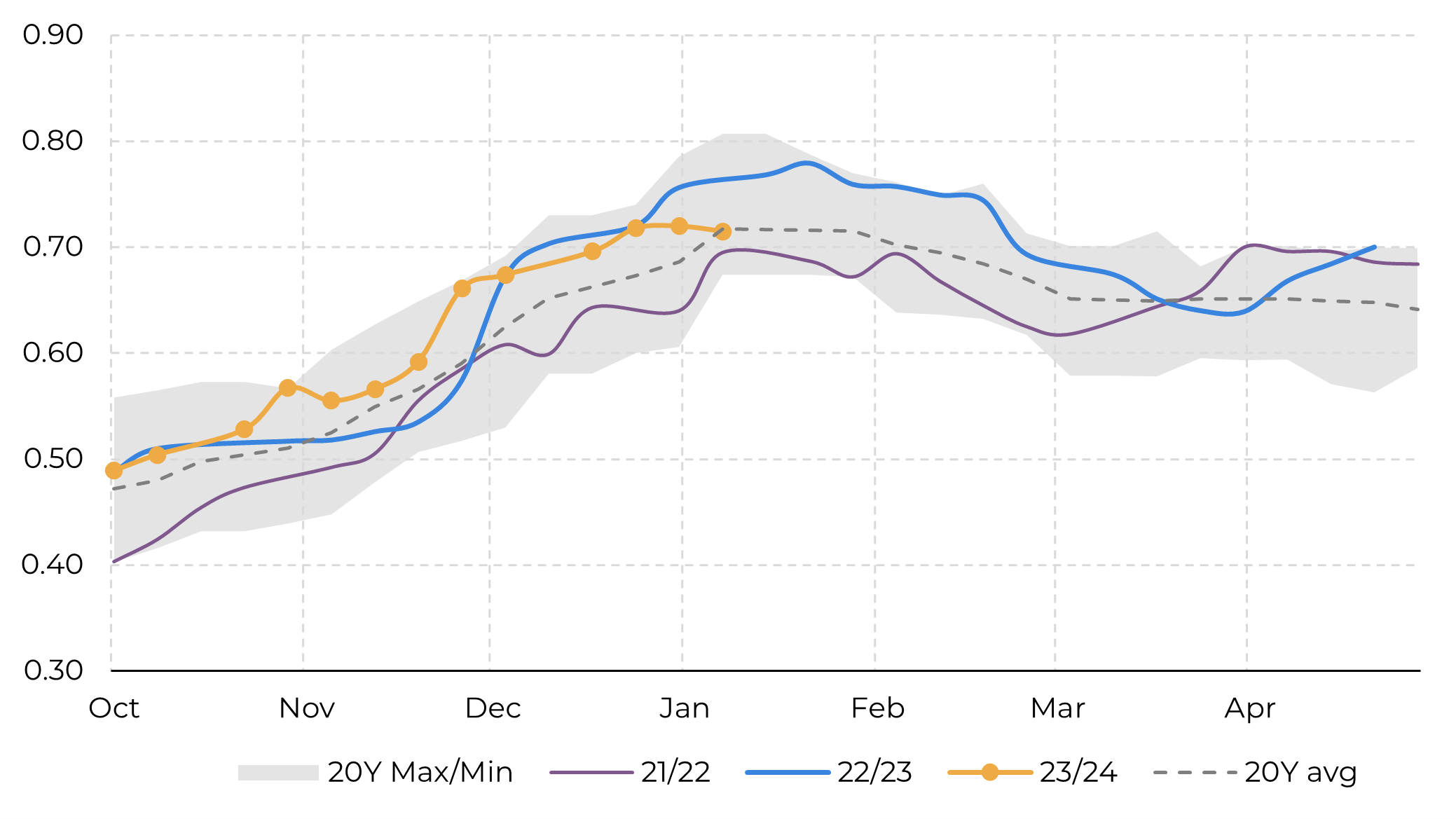
Source: NASA, hEDGEpoint
NDVI - MATOPIBA

NDVI - Santa Catarina, Rio Grande do Sul
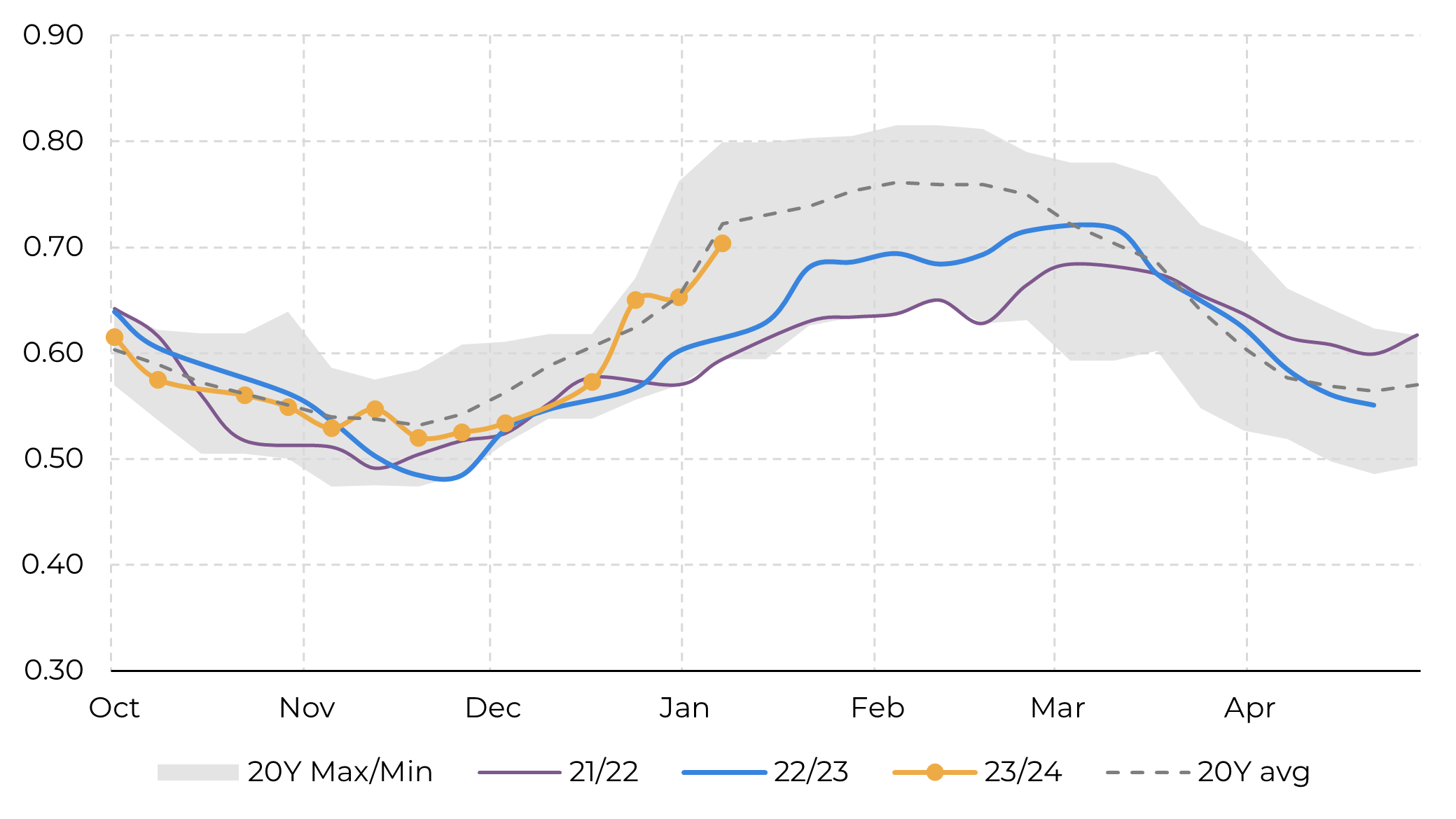
Source: NASA, hEDGEpoint
In Summary
The gist of it is that, in our opinion, while there are certainly reasons for the cuts we have been seeing, one might want to be careful with "too low" numbers.
Weekly Report — Grains
Written by Pedro Schicchi
pedro.schicchi@hedgepointglobal.com
pedro.schicchi@hedgepointglobal.com
Reviewed by Alef Dias
alef.dias@hedgepointglobal.com
alef.dias@hedgepointglobal.com
www.hedgepointglobal.com
Disclaimer
This document has been prepared by hEDGEpoint Global Markets LLC and its affiliates ("HPGM") exclusively for informational and instructional purposes, without the purpose of creating obligations or commitments with third parties, and is not intended to promote an offer, or solicitation of an offer, to sell or buy any securities or investment products. HPGM and its associates expressly disclaim any use of the information contained herein that may result in direct or indirect damage of any kind. If you have any questions that are not resolved in the first instance of contact with the client (client.services@hedgepointglobal.com), please contact our internal ombudsman channel (ouvidoria@hedgepointglobal.com) or 0800-878-8408 (for clients in Brazil only).
Contact us
hedgepointhub.support@hedgepointglobal.com
ouvidoria@hedgepointglobal.com
Funchal Street, 418, 18º floor - Vila Olímpia São Paulo, SP, Brasil
This page has been prepared by Hedgepoint Schweiz AG and its affiliates (“Hedgepoint”) solely for informational and instructional purposes, without the purpose of instituting obligations or commitments to third parties, nor is it intended to promote an offer, or solicitation of an offer of sale or purchase relating to any securities, commodities interests or investment products. Hedgepoint and its associates expressly disclaim any use of the information contained herein that directly or indirectly result in damages or damages of any kind. Information is obtained from sources which we believe to be reliable, but we do not warrant or guarantee the timeliness or accuracy of this information. The trading of commodities interests such as futures, options, and swaps involves substantial risk of loss and may not be suitable for all investors. You should carefully consider wither such trading is suitable for you in light of your financial condition. Past performance is not necessarily indicative of future results. Customers should rely on their own independent judgement and/or advisors before entering in any transaction.Hedgepoint does not provide legal, tax or accounting advice and you are responsible for seeking any such advice separately.Hedgepoint Schweiz AG is organized, incorporated, and existing under the laws of Switzerland, is filiated to ARIF, the Association Romande des Intermédiaires Financiers, which is a FINMA-authorized Self-Regulatory Organization. Hedgepoint Commodities LLC is organized, incorporated, and existing under the laws of the USA, and is authorized and regulated by the Commodity Futures Trading Commission (CFTC) and a member of the National Futures Association (NFA) to act as an Introducing Broker and Commodity Trading Advisor. HedgePoint Global Markets Limited is Regulated by the Dubai Financial Services Authority. The content is directed at Professional Clients and not Retail Clients. Hedgepoint Global Markets PTE. Ltd is organized, incorporated, and existing under the laws of Singapore, exempted from obtaining a financial services license as per the Second Schedule of the Securities and Futures (Licensing and Conduct of Business) Act, by the Monetary Authority of Singapore (MAS). Hedgepoint Global Markets DTVM Ltda. is authorized and regulated in Brazil by the Central Bank of Brazil (BCB) and the Brazilian Securities Commission (CVM). Hedgepoint Serviços Ltda. is organized, incorporated, and existing under the laws of Brazil. Hedgepoint Global Markets S.A. is organized, incorporated, and existing under the laws of Uruguay. In case of questions not resolved by the first instance of customer contact (client.services@Hedgepointglobal.com), please contact internal ombudsman channel (ombudsman@hedgepointglobal.com – global or ouvidoria@hedgepointglobal.com – Brazil only) or call 0800-8788408 (Brazil only).Integrity, ethics, and transparency are values that guide our culture. To further strengthen our practices, Hedgepoint has a whistleblower channel for employees and third-parties by e-mail ethicline@hedgepointglobal.com or forms Ethic Line – Hedgepoint Global Markets.Security note: All contacts with customers and partners are conducted exclusively through our domain @hedgepointglobal.com. Do not accept any information, bills, statements or requests from different domains and pay special attention to any variations in letters or spelling, as they may indicate a fraudulent situation.“HedgePoint” and the “HedgePoint” logo are marks for the exclusive use of HedgePoint and/or its affiliates. Use or reproduction is prohibited, unless expressly authorized by HedgePoint. Furthermore, the use of any other marks in this document has been authorized for identification purposes only. It does not, therefore, imply any rights of HedgePoint in these marks or imply endorsement, association or seal by the owners of these marks with HedgePoint or its affiliates.

